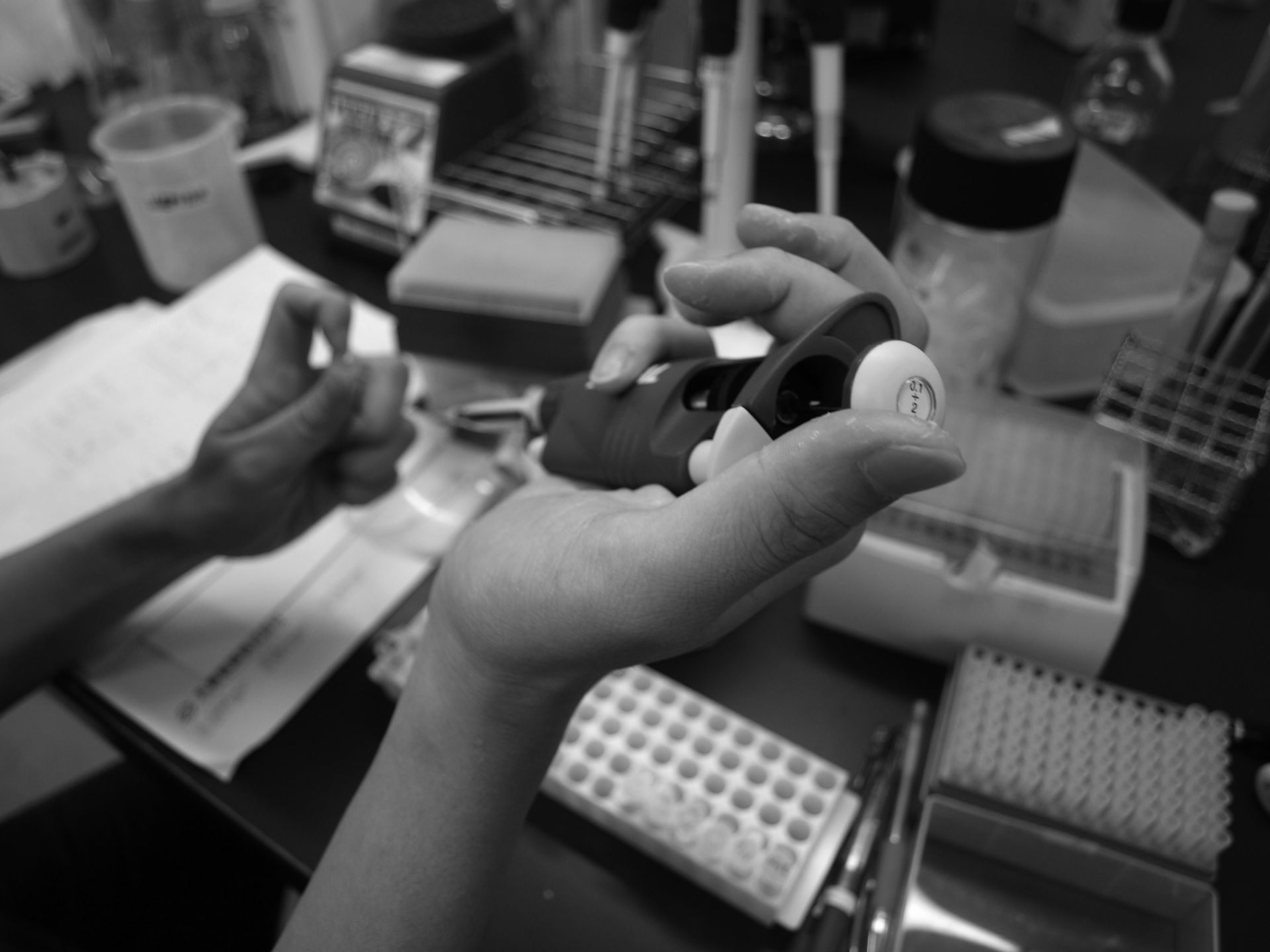Team:KIT-Kyoto/Project
From 2014.igem.org
Lovetaylor (Talk | contribs) |
|||
| Line 42: | Line 42: | ||
<p class="sentence"> | <p class="sentence"> | ||
As a part of Policy & Practices project, we conducted a survey on people’s attitudes toward genetic engineering. The results showed that the general public does not feel familiar not only with genetic engineering but also with science. So we designed our project in order to change this for the better.<br> | As a part of Policy & Practices project, we conducted a survey on people’s attitudes toward genetic engineering. The results showed that the general public does not feel familiar not only with genetic engineering but also with science. So we designed our project in order to change this for the better.<br> | ||
| - | What can we do to make science more appealing to everyone? One of the solutions for us was to harmonize science with arts. You may say that science is incompatible with arts. But KIT actually constitutes of science and arts majors embodying a fusion of them, as its philosophy posits “Wisdom, Beauty and Technology”. Our project fused science and arts in a KIT way. KIT has <a href="http://www.dgrc.kit.ac.jp">the <em>Drosophila</em> Genetic Resource Center (DGRC)</a>, which collects stocks of <em>Drosophila melanogaster</em>, an important model organism in life science research, from laboratories around the world. There are only two other such centers in the world. Inspired by this, we let <em>Drosophila</em> in our project with the help of <em>E.coli</em> and <em>S.cerevisiae</em>. Please enjoy living BioArt to feel science closer.<br> | + | What can we do to make science more appealing to everyone? One of the solutions for us was to harmonize science with arts. You may say that science is incompatible with arts. But KIT actually constitutes of science and arts majors embodying a fusion of them, as its philosophy posits “Wisdom, Beauty and Technology”. Our project fused science and arts in a KIT way. KIT has <a href="http://www.dgrc.kit.ac.jp">the <em>Drosophila</em> Genetic Resource Center (DGRC)</a>, which collects stocks of <em>Drosophila melanogaster</em>, an important model organism in life science research, from laboratories around the world. There are only two other such centers in the world. Inspired by this, we let <em>Drosophila</em> in our project with the help of <em>E. coli</em> and <em>S. cerevisiae</em>. Please enjoy living BioArt to feel science closer.<br> |
<br> | <br> | ||
</p> | </p> | ||
Revision as of 09:57, 16 October 2014



Project
Overview
As a part of Policy & Practices project, we conducted a survey on people’s attitudes toward genetic engineering. The results showed that the general public does not feel familiar not only with genetic engineering but also with science. So we designed our project in order to change this for the better.
What can we do to make science more appealing to everyone? One of the solutions for us was to harmonize science with arts. You may say that science is incompatible with arts. But KIT actually constitutes of science and arts majors embodying a fusion of them, as its philosophy posits “Wisdom, Beauty and Technology”. Our project fused science and arts in a KIT way. KIT has the Drosophila Genetic Resource Center (DGRC), which collects stocks of Drosophila melanogaster, an important model organism in life science research, from laboratories around the world. There are only two other such centers in the world. Inspired by this, we let Drosophila in our project with the help of E. coli and S. cerevisiae. Please enjoy living BioArt to feel science closer.
Gallery
a
a
a
a
a
a
a
a
a
a
a
a
a
a
a
a
a
a
a
a
a
a
a
a
a
Short Film
KIT-Kyoto made an introductory video "How to make basic BioArt." We hope that more people can find genetic engineering appealing. With a little bit of labware, you can make BioArt!
 "
"
